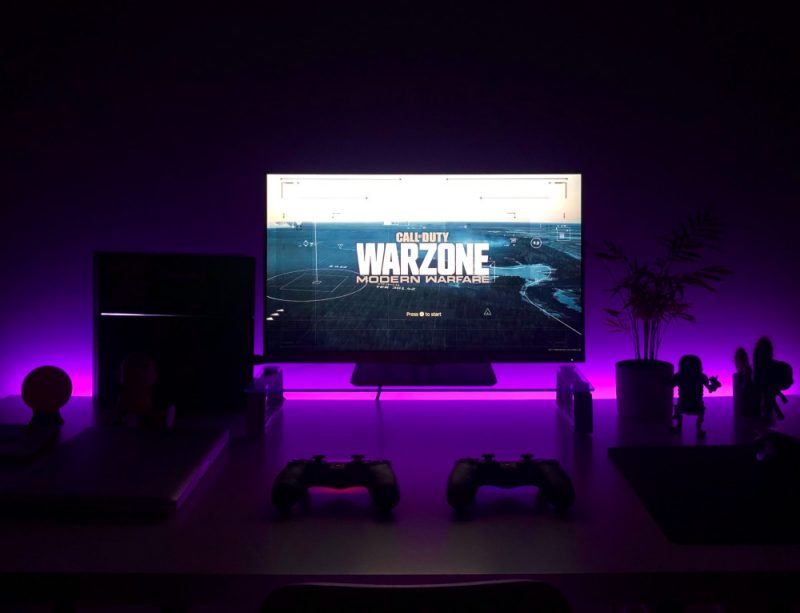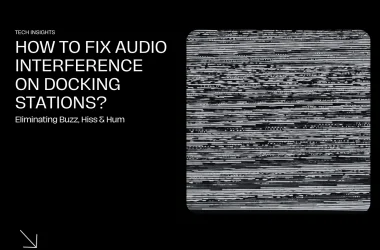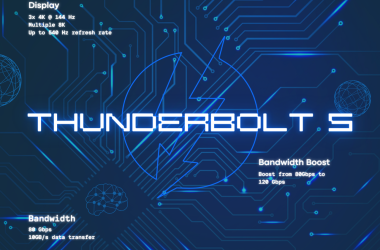Choosing a monitor to game on is an important decision for gamers. There are a lot of factors that come into play when choosing the optimum monitor to game on. A very important factor is perhaps the size of the monitor. It might seem appealing for a gamer to get an Odyssey G9 (Amazon Link), but there have been numerous instances of people not being able to game comfortably on huge monitors even though their quality is unmatched.
You probably think I am out of my mind here and that Odyssey G9 should be an automatic and obvious choice for anyone looking for serious gaming.
However, have you noticed that you can see more of what’s around it as you move away from an object, and this reduces as you move closer? This happens due to changes in viewing distance.
At a close distance, a human eye is too close to focus on the entirety of a big monitor. Hence, if you want to game from your sofa or at least 50 inches away from the display, you can gladly go for a huge display, but on regular gaming set-ups, it might just be too big for you to focus on the entire display at close range all at once.
There is a combination of different factors based on which the size of a display seems optimum. So let’s first look at the factors that should govern our decision and then understand why each of these factors is important.
Table of Contents
4 Factors that Decide the Size of a Gaming Monitor
To some, this might seem like overthinking, but these things matter when you want even the slightest competitive edge. You pinpoint the factors that might affect your performance, then measure and manage them.
1) Viewing Distance
Simply put, viewing distance is how far you are from the display when gaming on it. It is the single most crucial factor with the resolution coming a close second that would decide the size of the monitor for you.
The human eye has more than a 180-degree view, but it is divided into central and peripheral vision. Central vision is what we see in front of us and can clearly focus on. This amounts to roughly 5 degrees in the center. Rest all is divided between near and far/wide peripheral vision.
This is what we see without focusing directly. Why is all this important? Well, the more we move away from our point of focus, the more elements can accommodate in our central and near-peripheral zone on which we can focus on voluntarily. Here is an image illustrating the same with respect to a monitor.

Image 1 shows how human vision works. We should note that the angles change when our focus changes.
When we focus on the center of the monitor, the rest of the monitor falls in our near peripheral vision. This changes when we are looking at the corner of the monitor.
In Image 2, we can see that if we are too close to a monitor and its size exceeds our near peripheral vision, we might face issues, especially in competitive gaming, which needs good concentration. If the focus is on something towards the edges or corners of the monitor, we might miss things on the other edge of the monitor, which is now in the wide peripheral angle.
However, according to Image 3, if we view the monitor from a distance, we can see that the monitor’s entire screen falls inside our near-focus angle.
Elements nearer to our focus point are automatically better visible to a human than elements further wideHence, the optimum size of a monitor for you should be one in which you can focus on the entire monitor comfortably from the distance you plan to game from. Go for a 24-inch monitor if you plan to sit less than 3 feet away from the display. For a 32-inch monitor, you ought to sit at least 5 feet away from the screen. The distance could increase to much more than 5 feet if you opt for a monitor more than 40 inches.
2) Gaming Resolution
The size of the monitor has a lot to do with the resolution you would be gaming on.
Full HD/1080p Gaming
If your system is configured for 1080p gaming, then 22-24 inches is the size for you. 1080p resolution on a 24-inch monitor would be ideal for your graphics card than on bigger screens. A vital factor to keep in mind is that 1080p roughly translates to around 90m pixels per inch which remain the same even on a bigger screen. While this PPI is suitable for a 22-24-inch screen, on a 32-inch monitor at 1080p, the experience would be blurry as the PPI would drop to less than 70 and would not be ideal for gaming.
A stumbling block for a smaller monitor would be less screen real estate and limited ability for picture-in-picture. You might have to scroll more too, but the ability to focus on the entire display and the savings you would make on a cheaper graphics card outweighs the drawbacks.
An excellent and highly rated 24-inch Full HD monitor is the Acer R240HY bidx (Amazon Link)
Quad HD/1440p Gaming
For the gamers wanting to take their gaming up a notch, QHD is what they would want to game on, and a screen size around 27 inches would suit them best. The size is ideal for competitive action games like CS: GO or Apex Legends. At this size, there is more screen real estate to work with than a 24-inch monitor; hence the scroll wheel is used less.
In addition to this, the generous amount of PPI generated from QHD resolutions would be enough for razor-sharp graphics and a complete visual experience. Your current graphics card might just handle the resolution without the need to upgrade.
The price to performance ratio is optimum, and hence 1440p gaming on a 27-inch monitor is usually termed as the ‘sweet spot’ for gaming. A good example of this is the AOC CQ27G2 27″ (Amazon Link).
UDH 4K/True 4K Gaming
Lastly, the optimum size for uber class gamers who are hard to satisfy with anything less than the best available. Although only a few games can actually run in 4K resolution. There are a large number of displays available with native 4K or UDH support. The size one should go for is above 32-inches as the PPI required for smooth gamely on big-screen monitors with lively visuals would be inadequate for any resolution that is less than 4K. A size above 32-inches should be preferred by gamers who are into cinematic games like Assassin’s Creed or the Far Cry series.
However, it is worth remembering that ‘Great Experiences (Usually) Come at a Huge Price.’ Hence, you might want to upgrade that graphics card first. A graphics card that can do 4K is nowhere near affordable. A good monitor here is the ViewSonic VX3276-4K-MHD 32 (Amazon Link). For those who want a monitor to be the prime attraction of your house/room, again, we’d recommend the Odyssey G9 (Amazon Link).
3) Type of Monitor Set-Up
The next factor that could decide the monitor size is the type of set-up. By type, we mean going for a multi-monitor, single monitor, or a widescreen monitor set up.
Single Monitor Set-up
It is perhaps evident by now that if you are going for a standard screen set up, the size depends on the resolution and viewing distance of the set-up. You can go for bigger size monitors, but the resolution must be increased according to the size of the monitor to allow for more pixels per inch which would result in smooth edges of the characters and overall sharp images, and better gameplay.
Multi-Monitor Set-up
For multi-monitor set-ups, the viewing distance needs to increase more. Let us go back to the human eye field of view. We would see that for multi-monitor set-ups, the edges on left and right would surely fall in the far peripheral vision range, and you would have to compensate for that by constantly rotating your head from side to side if you choose to stay fixed at your viewing distance.
Widescreen Curved Monitor Set-up
Widescreen displays are selling like hotcakes now, and they have good reasons for that. Some might argue this to be the sweet spot for gamers as the aspect ratio and supported resolution in widescreen curved displays are optimum for big-screen gaming. In the case of multi-monitor screen set-ups, the width of the monitor increases, but the height remains the same as a regular monitor. Hence, in multi-monitor set-ups, you got to deal with the increase in width at the same height. However, in widescreen displays, the width increases, but the height is hugely reduced. Here the head movement is limited between left and right.
4) Available Space
It would be a calamity to get a big screen monitor and returning home to find out that it does not fit your table. You would not feel like returning the monitor for a smaller size, and the delay in getting a new table would be such a bummer for the excitement. In addition to the monitor’s size, you would need to make sure that there is enough space for the gaming keyboard and mouse and the speakers (unless you are in for discreet gaming on headphones).
Cramming everything in a small space would just take away the elegance of the new monitor you have just purchased. Think about the LED set up you have done. What would be the point of it if the monitor cover’s up all the space and there isn’t enough space for the LED to shine.
Conclusion
There should be a lot of thought going behind what size you choose for your gaming monitor, as these are one-time buys that would be there with you for quite a long time. You may choose to live with moving your head a little and opt for a huge monitor for a ‘closer to the screen’ set up, but this could become a headache in the long run when it becomes difficult for you to focus on the entirety of the big screen all at the same time. You would also do good to decide based on the games you play. For example, a game like DOTA 2 has actions going on the entire screen, and simultaneous actions on the bottom right and top left corner of a big display would be challenging to focus on simultaneously. A small miss, and the hero dies.
Monitor Size – Frequently Asked Questions
Why is there no particular size of a monitor that is the best?
Many factors affect user choices, and above all, there is a user preference. Preference changes from user to user, and hence no size can be termed as best.
Why should the resolution of a monitor change with its size?
A bigger monitor means a more significant view area. If the resolution stays fixed and the size of a monitor increases, then the same number of pixels are stretched to fit the more significant view area. The stretching of pixels causes the screen to reduce the sharpness of everything displayed on the screen. Hence, with an increase in the size of the monitor, a higher resolution will allow for more pixels in every inch, and the screen would continue to allow for sharper display quality.
Is getting a bigger display with more resolution enough?
Certainly not. The resolution of the monitor is as good as the capability of the graphics card. A UHD resolution screen must have a UHD resolution photo or video to showcase its full capabilities. If the graphics card is not capable of delivering 4K quality, then the screen alone would not be able to improve the quality of the feed.
Should the size of the monitor depend on the game I play?
Every game can be played on any monitor. However, the type of games you play could become a factor if you decide to change the viewing distance to screen size ratios. In those cases, sitting too near to a big screen might affect the gameplay of certain games, which requires you to focus on the entire screen at the same time actively.





